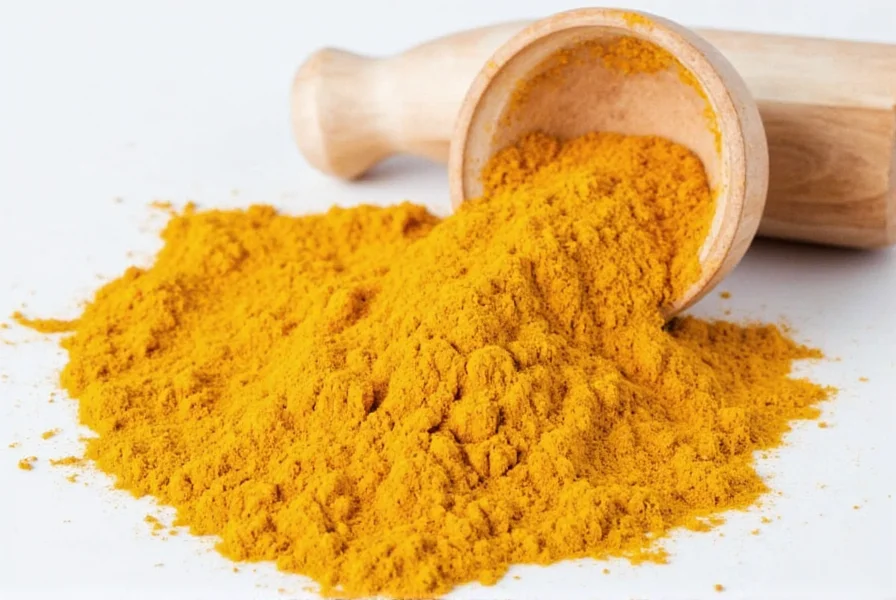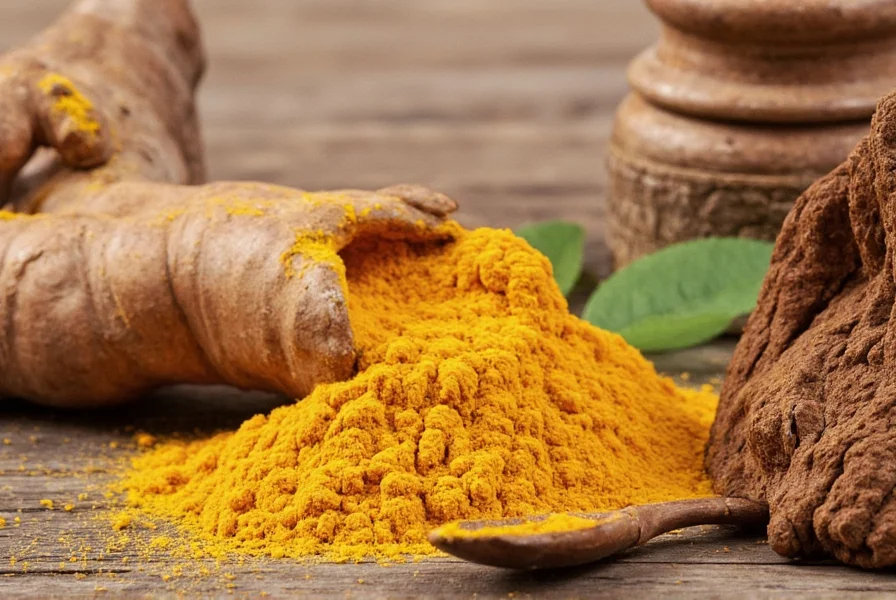The most scientifically supported method for taking turmeric is combining 500-2,000 mg of curcumin (turmeric's active compound) with piperine from black pepper and a healthy fat source. This combination increases curcumin absorption by up to 2,000% compared to turmeric alone, addressing its naturally poor bioavailability. For culinary use, adding 1/2 teaspoon of turmeric powder to cooked dishes with olive oil or coconut milk and a pinch of black pepper provides measurable health benefits.
Understanding how to properly consume turmeric makes all the difference in experiencing its potential health benefits. Turmeric contains curcumin, a powerful compound with anti-inflammatory and antioxidant properties, but its effectiveness depends entirely on how you incorporate it into your routine. Many people unknowingly consume turmeric in ways that provide minimal benefit due to its notoriously low bioavailability.
Why Turmeric Absorption Matters
Curcumin, turmeric's primary active component, has extremely poor bioavailability when consumed alone. Research shows that only about 1% of pure curcumin is absorbed into the bloodstream. This explains why traditional culinary practices often combine turmeric with black pepper and fats—a practice now validated by modern science. The key to unlocking turmeric's potential isn't just consuming it, but consuming it in ways that maximize absorption.

Scientifically Supported Methods for Taking Turmeric
Not all turmeric consumption methods deliver equal results. Evidence-based approaches include:
| Method | Absorption Rate | Recommended Daily Amount | Best For |
|---|---|---|---|
| Curcumin with piperine supplement | Up to 2,000% increase | 500-2,000 mg curcumin | Therapeutic benefits |
| Golden milk (turmeric + fat + pepper) | Approximately 7x increase | 1/2-1 tsp turmeric powder | Daily wellness routine |
| Cooked dishes with healthy fats | 3-5x increase | 1/4-1/2 tsp turmeric powder | Meal integration |
| Plain turmeric powder alone | Negligible absorption | Not recommended | Limited benefit |
Optimizing Turmeric Absorption: The Science-Backed Approach
Three critical factors determine how effectively your body utilizes turmeric:
1. The Black Pepper Connection
Piperine, the active compound in black pepper, inhibits certain liver and intestinal enzymes that break down curcumin. A landmark study published in Planta Medica demonstrated that adding just 20 mg of piperine to curcumin increased bioavailability by 2,000%. This explains why traditional Ayurvedic and culinary practices consistently pair turmeric with black pepper.
2. Fat-Soluble Nature of Curcumin
Curcumin is fat-soluble, meaning it dissolves in fats rather than water. Consuming turmeric with healthy fats like coconut oil, olive oil, or avocado dramatically improves absorption. When preparing golden milk or cooking with turmeric, always include a fat source—this simple step can increase absorption by up to 700%.
3. Heat Activation
Moderate heating enhances curcumin's solubility. Research in the Journal of Food Science shows that gently heating turmeric in liquid (as in golden milk) for 10-15 minutes increases its bioactive properties. However, excessive high-heat cooking can degrade curcumin, so moderate temperatures yield optimal results.
Dosage Guidelines Based on Research
The appropriate turmeric dosage depends on your specific health goals:
- General wellness: 1/4 to 1/2 teaspoon of turmeric powder daily in food or beverages
- Anti-inflammatory support: 500-1,000 mg of curcumin with piperine, taken with food
- Therapeutic applications: 1,500-2,000 mg of enhanced curcumin daily, divided into multiple doses
For reference, one teaspoon of turmeric powder contains approximately 200-300 mg of curcumin. Most clinical studies showing significant health benefits used standardized curcumin extracts providing 500-2,000 mg of curcumin daily.
Timing Your Turmeric Consumption
When you take turmeric affects its effectiveness:
- With meals: Always consume turmeric with food containing healthy fats for optimal absorption
- Morning vs. evening: For anti-inflammatory benefits, morning consumption may be preferable; for sleep support, evening golden milk works well
- Consistency: Daily consumption is more important than specific timing—curcumin builds up in the system over time
Safety Considerations and Potential Interactions
Turmeric is generally safe at culinary doses, but higher therapeutic doses require caution:
- May interact with blood thinners like warfarin
- High doses could cause gastrointestinal discomfort in sensitive individuals
- Not recommended for people with gallbladder issues
- Pregnant women should consult healthcare providers before therapeutic dosing
The European Food Safety Authority considers up to 3 mg of curcumin per kilogram of body weight daily as safe for long-term consumption. For a 150-pound person, this equates to approximately 200 mg of curcumin daily from all sources.
Practical Implementation Strategies
Incorporating effective turmeric consumption into daily life doesn't need to be complicated:
- Golden milk routine: Heat 1 cup almond milk with 1/2 tsp turmeric, 1/4 tsp cinnamon, pinch of black pepper, and 1 tsp coconut oil
- Smoothie booster: Add 1/4 tsp turmeric powder to fruit smoothies with Greek yogurt or nut butter
- Meal seasoning: Sprinkle turmeric with olive oil and black pepper on roasted vegetables or in soups
- Supplement strategy: Take curcumin supplements with your largest meal of the day containing healthy fats
Evidence-Based Benefits of Proper Turmeric Consumption
When consumed correctly, turmeric delivers measurable health benefits supported by research:
- Reduced markers of inflammation in multiple clinical trials
- Improved joint mobility and reduced pain in osteoarthritis patients
- Enhanced antioxidant protection against cellular damage
- Support for cognitive function and brain health
- Positive effects on cardiovascular health markers
A comprehensive review in Foods journal concluded that 'the combination of curcumin with piperine and lipids represents the most effective strategy for achieving therapeutic blood levels of curcumin.' This scientific consensus validates what traditional medicine systems have practiced for centuries.
Finding Quality Turmeric Products
Not all turmeric products deliver equal benefits. When selecting turmeric:
- Look for third-party tested supplements with standardized curcumin content
- Choose organic turmeric powder to avoid potential contaminants
- Check for enhanced absorption formulations (phospholipid complexes, nanoparticles)
- Avoid products with excessive fillers or artificial additives
- Consider curcumin concentration—standard turmeric contains only 2-8% curcumin
For culinary use, fresh turmeric root provides more complete phytochemical profile than powder, though powder offers more consistent curcumin dosing. The best approach often combines both forms for comprehensive benefits.

Conclusion: Maximizing Your Turmeric Benefits
The best way to take turmeric combines scientific understanding with practical application. By consistently consuming turmeric with black pepper and healthy fats, you transform this ancient spice into a powerful wellness tool. Whether through culinary integration or thoughtfully selected supplements, the key is creating conditions that maximize curcumin absorption. Start with small, sustainable changes to your routine, and you'll experience the difference that proper turmeric consumption can make for your health journey.











 浙公网安备
33010002000092号
浙公网安备
33010002000092号 浙B2-20120091-4
浙B2-20120091-4